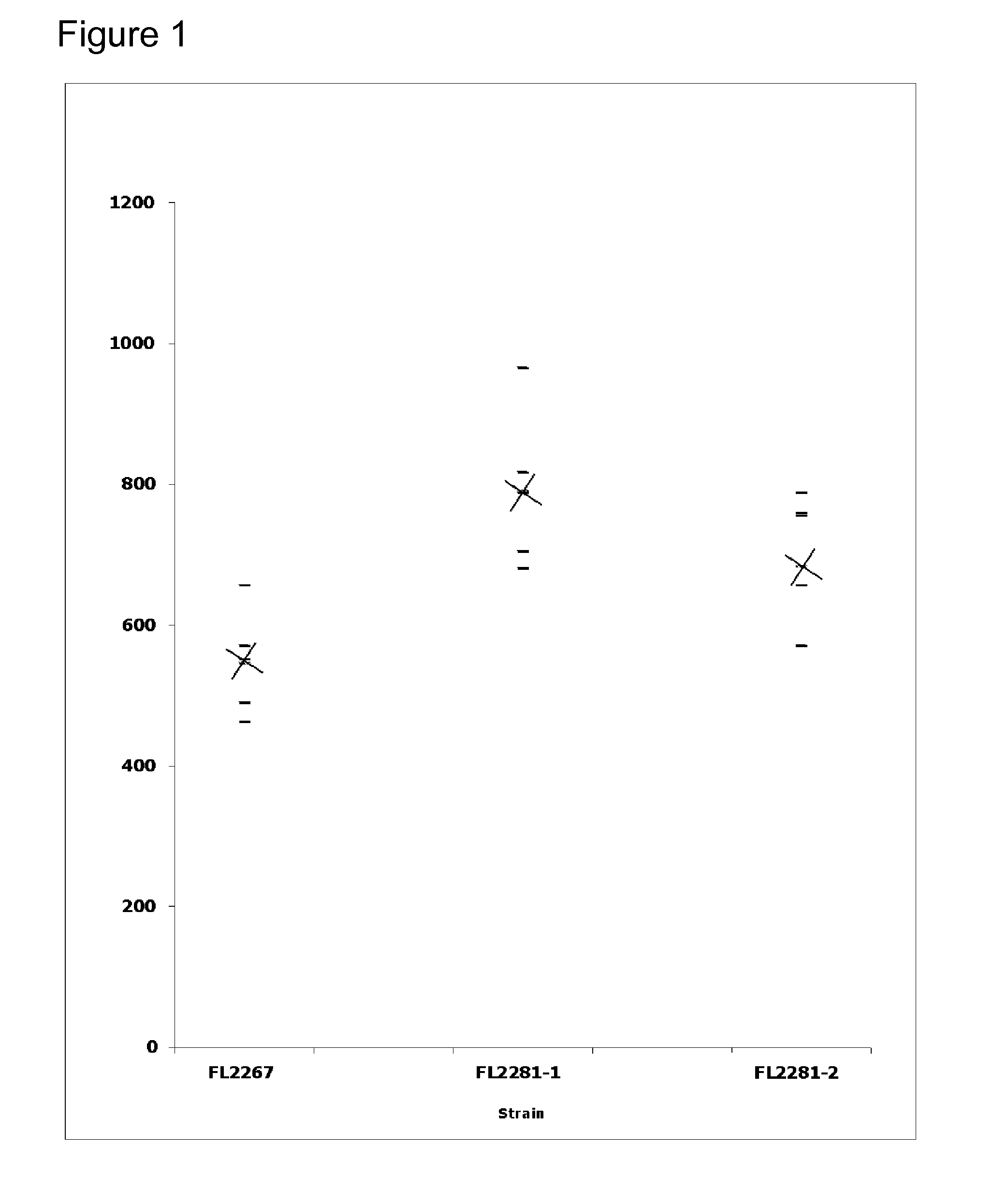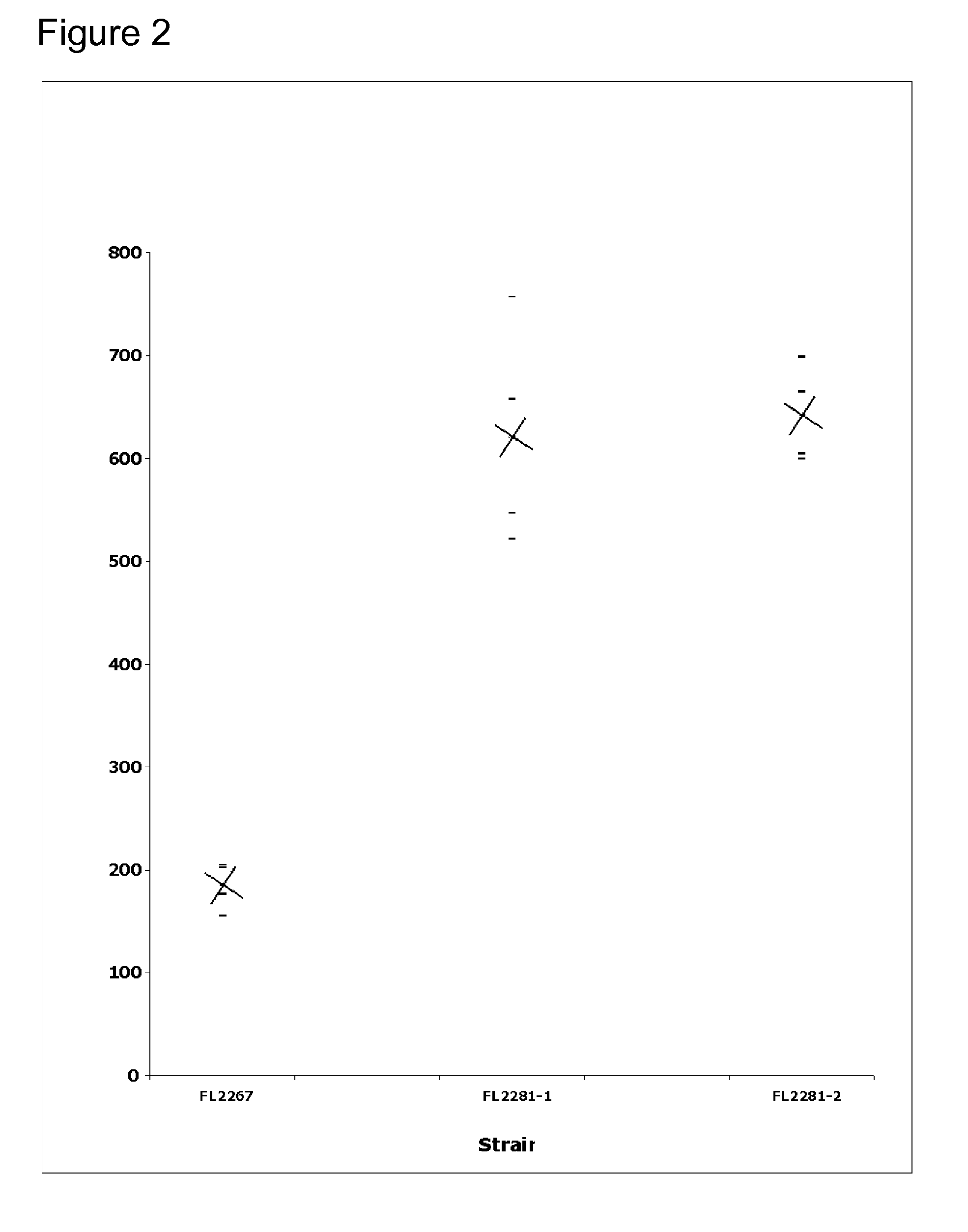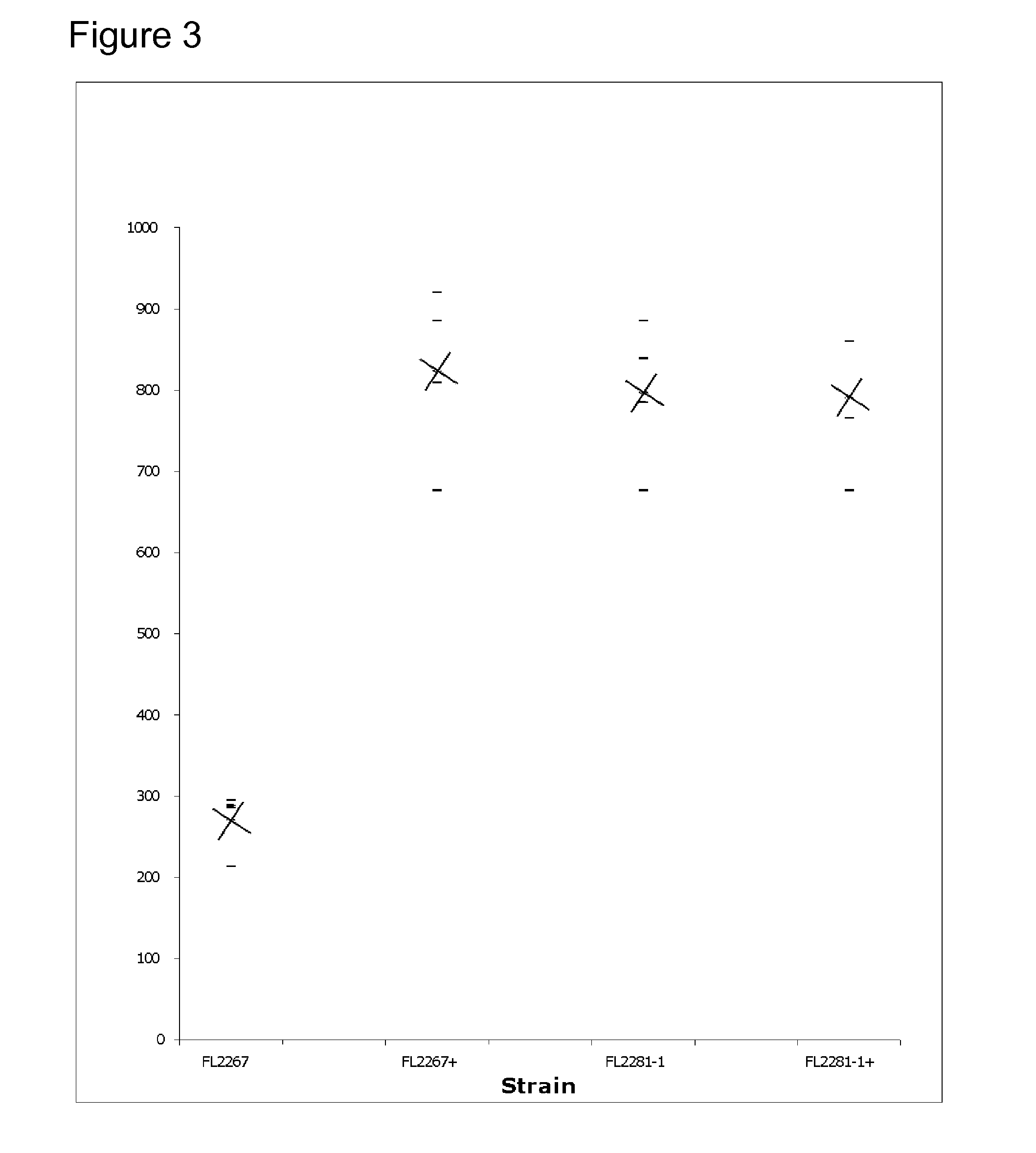Methods of increasing production of secondary metabolites by manipulating metabolic pathways that include methylmalonyl-coa
a technology of methylmalonyl-coa and metabolic pathway, which is applied in the direction of enzymology, microorganisms, transferases, etc., can solve the problems of limited production to the output of any particular strain, low efficiency and concentration, and real and current threats to biological weapons, etc., to increase the activity of methylmalonyl-coa, and increase the production of polyketide
- Summary
- Abstract
- Description
- Claims
- Application Information
AI Technical Summary
Benefits of technology
Problems solved by technology
Method used
Image
Examples
example 1
Methods and Materials—MCM mutants in an Industrial Erythromycin-Producing Strain and Erythromycin Production
[0126] Bacterial Strains and Culture Conditions
[0127] The bacterial strains and plasmids used in this study are shown in Table 7. Saccharopolyspora erythraea ATCC 11635. S. erythraea FL2267 is a derivative of ATCC 11635, an industrial erythromycin-producing strain, that was generated by eviction of an integrated plasmid and reversion to the wild-type thiostrepton-sensitive phenotype. FL1347 is a low erythromycin-producing red variant of ATCC 11635 generated at Fermalogic, Inc. (Chicago, Ill.) by spontaneous mutation. The white wild-type strain and derivatives were cultured on E20A agar plates (E20A per liter tap water: 5 g, bacto soytone; 5 g, bacto soluble starch; 3 g, CaCO3, 2.1 g 3-(N-Morpholino)propanesulfonic acid (MOPS); 20 g, Difco agar (Becton-Dickinson; Franklin Lakes, N.J.); after autoclaving added 1 ml of thiamine (1.0% solution) and 1 ml of FeSO4 (1.2% solution))...
example 2
Growth, Pigmentation and Sporulation Phenotypes of mutB Mutants. Red Variant Mutants
[0139] Previous results from S. erythraea red variant mutB mutants showed a pleiotropic effect of the mutation. In those strains, major phenotypic differences were observed in the mutants compared to the parent strain in their ability to: (i) produce diffusible red pigment; (ii) grow on methylmalonic acid as the sole carbon source; and (iii) form aerial mycelia followed by complete septation of spores.
[0140] The same experiments were performed with the white S. erythraea mutB mutant strains. Cells of FL2281 and FL2302, along with parent and single crossover strains as controls, were plated onto four different plates: (i) E20A (a rich medium) and three separate AVMM plates containing either (ii) glucose, (iii) methylmalonic acid, or (iv) glucose and succinate as sole carbon sources. As observed with the red variant mutB mutants, both types of white strain mutant exhibited the same pleiotropic effect...
example 3
Erythromycin Production of mutB Muntants
[0143] In these experiments, the ability of the mutated strains to produce erythromycin was tested. Shake flask fermentations were performed on mutB mutants to first determine whether the mutation increased erythromycin production. The results of these experiments were used to optimize antibiotic production by implementing process improvements. Process improvements that were implemented once an increase in production was observed in mutB mutants were the addition of three-fold more soluble starch and the elimination of soybean oil. Shaker speed was increased from 350 rpm to 390 rpm.
[0144] Initial fermentations consisted of shake flask cultures of S. erythraea wild type strain and mutB mutant in medium 2 (SCM+5% soybean oil). Cultures were incubated at 32.5° C. for 5 days at 350 rpm with humidity at a constant 65%. Shake flasks were inoculated with a 2-day seed culture at a 1:10 dilution, and the results are shown in FIG. 1. “X's” indicate th...
PUM
| Property | Measurement | Unit |
|---|---|---|
| Temperature | aaaaa | aaaaa |
| Volume | aaaaa | aaaaa |
| Volume | aaaaa | aaaaa |
Abstract
Description
Claims
Application Information
 Login to View More
Login to View More - R&D
- Intellectual Property
- Life Sciences
- Materials
- Tech Scout
- Unparalleled Data Quality
- Higher Quality Content
- 60% Fewer Hallucinations
Browse by: Latest US Patents, China's latest patents, Technical Efficacy Thesaurus, Application Domain, Technology Topic, Popular Technical Reports.
© 2025 PatSnap. All rights reserved.Legal|Privacy policy|Modern Slavery Act Transparency Statement|Sitemap|About US| Contact US: help@patsnap.com



